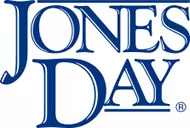The European Food Safety Authority ("EFSA") has completed its reevaluation of all food colors permitted for use in the European Union before 2009. Over the past seven years, EFSA's Panel on Additives and Nutrient Sources Added to Food has reassessed the safety of 41 food colors, taking into account all available scientific studies and data. Where possible, the Panel has established or updated an Acceptable Daily Intake ("ADI") for each substance. Overall, the maximum levels of three colors (E 104, E 110, E 124) were lowered, and the color Red 2G (E 128) was removed from the market. The last color additive to be evaluated has been titanium dioxide. The final reevaluation was published on September 14, 2016, and concluded that available data on use of titanium dioxide (E 171) in food does not indicate health concerns for consumers. However, EFSA recommended new studies be carried out to fill data gaps on possible effects on the reproductive system, which could require setting an updated ADI.
The content of this article is intended to provide a general guide to the subject matter. Specialist advice should be sought about your specific circumstances.




